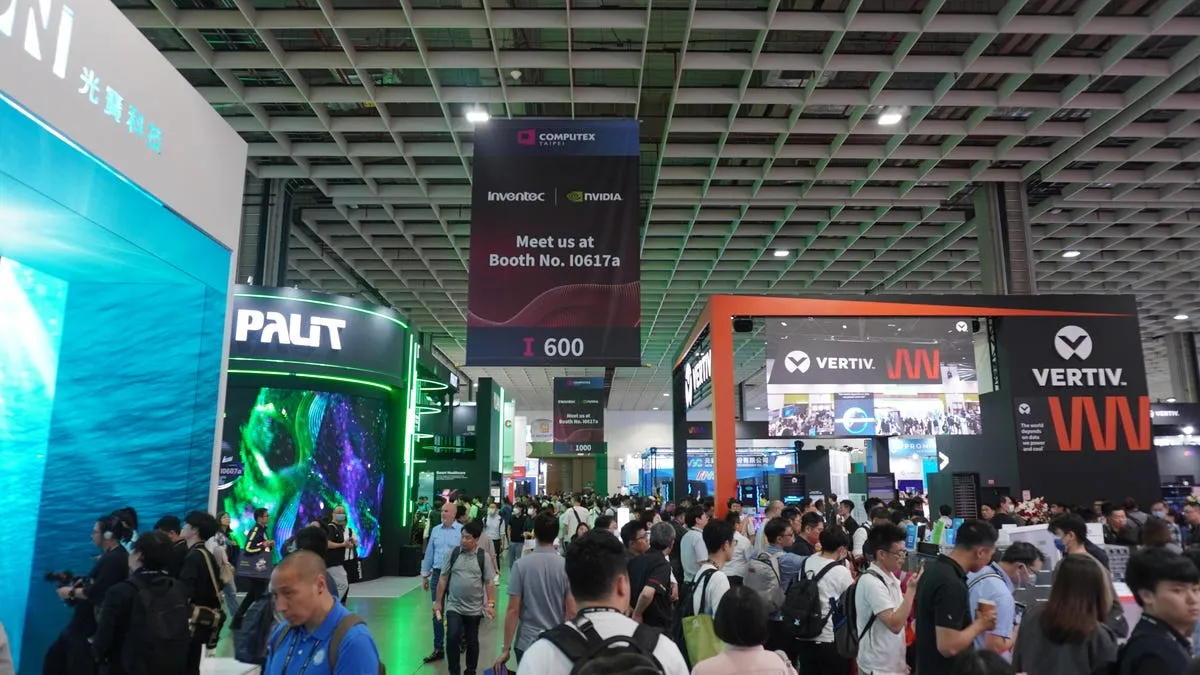
Computex 2025 has officially commenced in Taipei, showcasing an impressive array of the latest gadgets in the computing world. This year, the spotlight shines brightly on artificial intelligence, emphasizing the advancements made in processing power, power efficiency, and next-generation NPUs. Major players in the industry, including Nvidia and AMD, unveiled their latest GPUs, while Intel teased its new Panther Lake series of processors. Additionally, I had the opportunity to get hands-on experience with every new Acer laptop from its 2025 lineup, and I’m excited to share the standout features.
This year’s Computex is not just about laptops and computers; it also features innovative gaming handhelds, a unique split keyboard from Asus, and a competitively priced smart ring from Acer—a first for the computing giant. The focus is on enhancing user experience while making technology more accessible to everyone.
During Nvidia's keynote, CEO Jensen Huang made significant announcements, including the establishment of a new headquarters in Taipei's Beitou Shilin Science Park. However, the highlight for consumers was the introduction of the GeForce RTX 5060, which is based on Nvidia's latest Blackwell architecture and is designed to be competitively priced. This new GPU is already making waves in the market.
One of the first laptops to feature the RTX 5060 is the Asus TUF A18, marking Asus's first 18-inch model in its durable and affordable gaming lineup. Equipped with an AMD Ryzen 7 260 processor, this laptop boasts a stunning 2.5K display with a 240 Hz refresh rate and a user-upgradeable dual PCIe 4.0 SSD, all starting at a competitive price of $1,599.
On the premium side, the Razer Blade 14 emerged as the thinnest and lightest model yet, measuring just 0.62 inches. With the new RTX 5060 GPU and an AMD Ryzen 9 AI 365 processor, it features a luxurious 3K OLED display. Although it was not on display at Computex, its announcement coincided with Nvidia's keynote, with a starting price of $2,699.
The gaming-centric Asus ROG Falcata keyboard stands out with its unique design aimed specifically at gamers. By eliminating the right side of the keyboard, it allows players to focus solely on the essential W, A, S, and D keys. This wireless keyboard employs magnetic switches for a satisfying tactile experience and boasts a lifespan of up to 100 million key presses.
Despite the somewhat awkward connector cable joining the two halves, the Falcata promises an ergonomic gaming experience. Scheduled for release in summer 2025, pricing details are yet to be announced.
Acer has entered the smart ring market with a device that addresses common concerns: high cost and subscription fees. Priced around $199, the new titanium smart ring offers no subscription requirement and comes in seven sizes and two colors—black and rose gold. It provides essential health metrics, including heart rate, blood oxygen levels, and sleep quality, making it a more accessible option compared to premium alternatives.
The Acer FreeSense smart ring is anticipated to be available in summer 2025, and I look forward to testing it to see how it stands against competitors like the Oura Ring 4.
MSI showcased its latest gaming handheld, the Claw A8, which features an AMD Ryzen Z2 Extreme processor, 80 Wh battery, and up to 24 GB of memory. This model is a follow-up to the popular Claw 8 AI+, maintaining its impressive battery life and vibrant 8-inch, 120 Hz display.
In the gaming handheld landscape, the new Zotac Zone handheld stands out with a Ryzen AI 9 HX 370 processor, 32 GB of memory, and a 7-inch, 120 Hz AMOLED display. It operates on Linux and features dual trackpads, enabling a versatile gaming experience. Currently in development, no specific release date has been provided.
Intel is not lagging behind, as it introduced its next generation of processors, dubbed Panther Lake, aimed at enhancing power efficiency and performance beyond that of its Lunar Lake chips. Demonstrated at Computex, these processors are set to appear in consumer devices by early 2026, with MSI already planning a new lineup of laptops tailored for these chips.
These upcoming laptops, which promise significant advancements in design, are expected to be among the thinnest ever created by MSI, featuring 14- and 16-inch OLED displays, various color options, and an impressive battery life of up to 24 hours. With AI capabilities front and center, these devices are geared towards demanding workloads, indicating an exciting future for productivity in computing.
As we continue to explore the innovations unveiled at Computex 2025, it’s evident that the combination of cutting-edge hardware and user-focused design will shape the future of technology in the coming years.